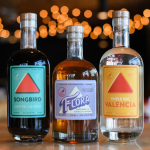Overview of Heat-Resistant Materials
When selecting the best oven gloves, understanding the materials used is crucial. Various oven gloves comprise materials like silicone, cotton, and aramid, each offering distinct heat-resistant properties. Silicone provides excellent heat protection, maintaining safety in the kitchen by withstanding high temperatures. However, glove materials also impact dexterity and comfort.
Oven gloves materials must be chosen considering factors such as durability, comfort, and specific kitchen tasks. For example, silicone’s flexibility aids handling, while cotton offers breathability for extended wear. Aramid combines supreme heat resistance and cut protection.
In the same genre : Discover the Ultimate Cookware Choices for Perfect Induction Cooking
When evaluating heat-resistant oven gloves, remember that each material’s suitability varies according to the cooking environment and task. An ideal choice balances protection and usability, ensuring safety while allowing easy maneuverability. By keeping these factors in mind, you can optimise kitchen safety and enhance culinary experiences. Understanding the pros and cons of each material guides you in making informed, effective decisions for selecting oven gloves.
Silicone Oven Gloves
Silicone gloves, crafted from silicone material, are renowned in culinary circles for their impressive heat resistive properties. Capable of enduring high temperatures, these gloves offer robust protection, ensuring safety in the kitchen. A notable advantage of silicone is its heat resistance, which makes it a preferred choice for handling hot pots and pans.
Have you seen this : The Perfect Frying Pan Shape for Effortless Crepe Flipping: A Guide to Success!
One of the most appealing benefits of silicone gloves is their flexibility. This allows users to maintain a reasonably good grip while maneuvering cookware. Additionally, silicone gloves are celebrated for being easy to clean, often requiring nothing more than a quick rinse under water, making them hygienic and low-maintenance.
However, silicone as a material is not without drawbacks. Users often report restricted dexterity, which can be an issue when performing detailed tasks that require a precise touch. Moreover, silicone gloves may occasionally cause slips if they become wet or greasy. This potential for slips can be mitigated by ensuring the gloves are dry before use.
In conclusion, despite their limitations, silicone gloves remain a popular option due to their heat resistance, ease of maintenance, and flexibility, making them a valuable addition to any kitchen setup.
Cotton Oven Gloves
Cotton gloves have long been a favoured choice for kitchen aficionados seeking both comfort and affordability in their protective gear. Known for being breathable oven gloves, they provide an airy feel, ensuring prolonged comfort during lengthy culinary tasks. This breathable nature makes them particularly suitable for extended wear.
The cotton glove advantages extend beyond comfort. Cotton’s absorbent qualities help manage moisture, reducing the likelihood of slipping, a common concern in kitchen scenarios. This characteristic can be particularly helpful when dealing with steam or minor spills. Despite these benefits, it’s vital to acknowledge the limitations cotton offers compared to synthetic materials. Cotton’s lower heat resistance means it might not withstand extreme temperatures as effectively, posing risks if handling ultra-hot cookware frequently.
Given these factors, cotton gloves are an excellent choice for everyday kitchen activities that don’t require exposure to excessively high heat levels. They are perfect for casual bakers and cooks who prioritise comfort and functionality over maximum heat resistance. When paired with other protective strategies, cotton gloves deliver a practical balance of comfort and usability in many cooking contexts.
Aramid Fabric Oven Gloves
Renowned for exceptional heat resistance, aramid gloves are a top choice for demanding kitchen environments. Aramid, a robust synthetic material, excels in heat protection by withstanding extremely high temperatures, ensuring user safety. This property makes aramid gloves highly appropriate for tasks such as grilling or broiling, where encountering intense heat is routine.
One of the main aramid material benefits lies in its durability. Unlike other materials, aramid fibres are inherently resistant to abrasion and wear, contributing to long-lasting performance. Additionally, these gloves offer superior cut resistance, adding an extra layer of protection when handling sharp kitchen tools.
However, there are drawbacks. Aramid gloves often come with a higher price tag compared to alternatives like cotton or silicone, which might deter budget-conscious buyers. Moreover, they are less widely available in general home goods stores, making them a less convenient option for some.
Despite these limitations, the protection and reliability of aramid oven gloves often justify their cost for those who require the highest levels of heat resistance and multi-faceted protection in their culinary endeavours. They remain an essential asset for professional chefs and avid home cooks alike.
Recommendations for Selecting Oven Gloves
When selecting the best oven gloves, it’s essential to consider key features that match your specific culinary needs. The choice of heat-resistant oven gloves is pivotal for ensuring kitchen safety and efficiency.
Consider the following aspects:
- Material: Assess whether silicone, cotton, or aramid suits your tasks. For high temperature grilling, aramid gloves with exceptional heat resistance may be the best.
- Comfort and mobility: If you need prolonged comfort and breathability, cotton gloves excel. They are excellent for baking or casual cooking.
- Maintenance: Silicone gloves offer easy cleaning.
Selecting oven gloves should also consider specific cooking scenarios. For grilling, look for high heat resistance; for baking, prioritise comfort and affordability.
Our expert recommendations include keeping an eye on real user reviews and consumer feedback to gauge long-term reliability. Check expert buying guides for top-rated products that match these criteria.
Comparative Analysis of Heat Resistance
When evaluating heat-resistant oven gloves, comparing materials offers insights into their efficacy and suitability. Oven glove effectiveness largely depends on the context of their use, influenced by material composition.
Aramid gloves exhibit the highest heat resistance, adept at handling extremely high temperatures. Ideal for grilling and broiling, they maintain safety under intense conditions but come with a higher price point. Silicone gloves, while slightly less heat-resistant, are praised for their flexibility and easy maintenance. They perform well in environments demanding moderate heat exposure and frequent cleaning.
Cotton gloves, despite their lower heat tolerance, are valued for their comfort and breathability, favourable for low-heat tasks and extended wear situations. Users often choose cotton for casual baking or light cooking, prioritising comfort over extreme protection.
Considering oven glove effectiveness entails recognising individual cooking habits. For high-temperature tasks, aramid emerges as the frontrunner, while silicone serves versatile kitchen needs. Cotton, conversely, shines in low-heat, comfort-driven settings. These distinctions guide home cooks and chefs in selecting the best oven gloves for their culinary endeavours, ensuring safety and efficiency.
User Reviews and Feedback
When exploring oven gloves, real-world user reviews and consumer feedback are invaluable. Users frequently highlight silicone gloves for their easy maintenance and heat resistance, often praising their practicality in daily use. However, the trade-off in dexterity is a frequent concern, particularly for tasks requiring precision.
Cotton gloves receive recognition for their comfort and affordability. Real-world experiences typically emphasise their suitability for casual cooking tasks, underscoring their breathability which limits discomfort during extended kitchen activities. Nonetheless, users often voice concerns about their insufficient protection against high heat, advising caution during intense cooking sessions.
On the other hand, aramid gloves gain accolades for exceptional heat resistance and durability. Feedback often reflects satisfaction with their performance in high-temperature environments like grilling, alongside the additional benefit of cut protection. Despite these strengths, consumers commonly note their increased cost and scarcity in general retail stores.
In summary, user reviews provide insightful perspectives on heat-resistant oven gloves, offering a practical glimpse into each material’s performance and longevity. Such feedback aids prospective buyers in evaluating the best oven gloves for their kitchen needs.











